Sea surface temperature: 45.5 F
Speed over ground: 8.7 Knots
Sunshine, Water Samples, and Russia
We arrived at the start of our second transect line, known as DBO 1 North, early in the morning. This line had ten stations. Kate and Kerry kindly taught me how to help with their water sampling, so I had a busy day sieving water and pouring concentrated amounts of plankton into test tubes.
[water pouring pic]
Our transect line brought us about 1.5 miles from Russian waters, and we could see the Russian coastline for most of the day. In the evening, we had fantastic views of Saint Lawrence Island and the village of Gambell on our other side. Herring gulls, northern fulmars, and other seabirds followed the ship.
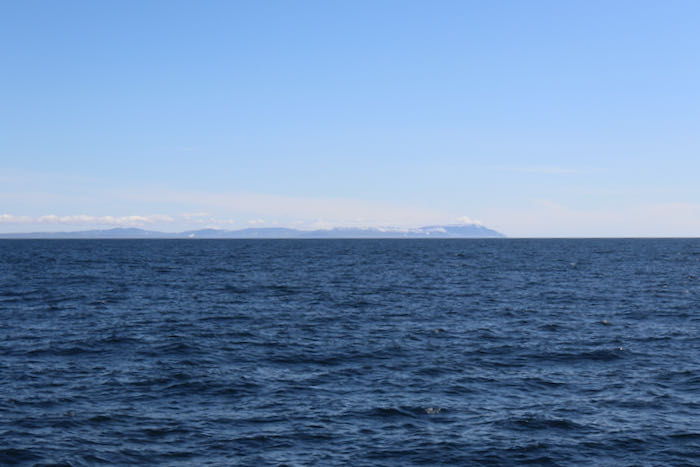

Deep Sea Clamming
I have always enjoyed going clamming with my family. It’s a great way to spend time together and collect a tasty meal. When we go clamming, we wait until low tide exposes the clams’ seafloor habitat. It’s easy to dig through the mud to find clams while the tide is out. But scientists on the Norseman II are floating on top of 223 feet of water. How do they find clams? And why bother hunting for tiny clams that are much too small to eat?
How do we find clams deep under the ocean?
We use the Smith-McIntyre grab! This device is lowered off the stern of the boat until it reaches the seafloor. When it hits bottom, powerful springs are released, snapping the bucket jaws shut to trap the sediment.
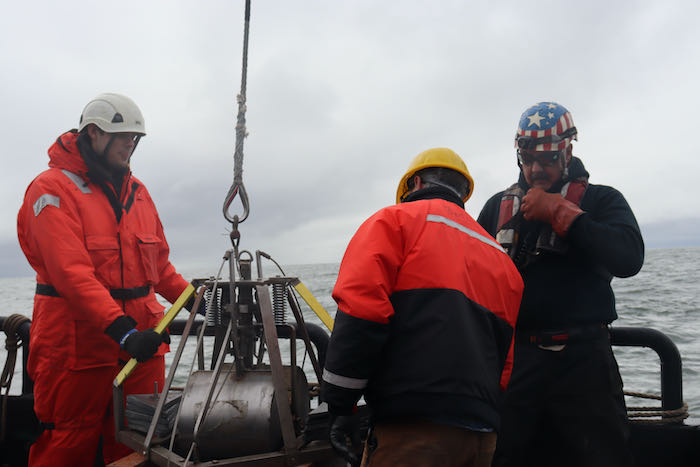
Once the grab is back on the boat, the fun begins. The top layer of sediment is sampled for plankton cysts. Then we empty the grab into a cooler and sort through the sediment to find clams, worms, brittle stars, and other benthic animals.
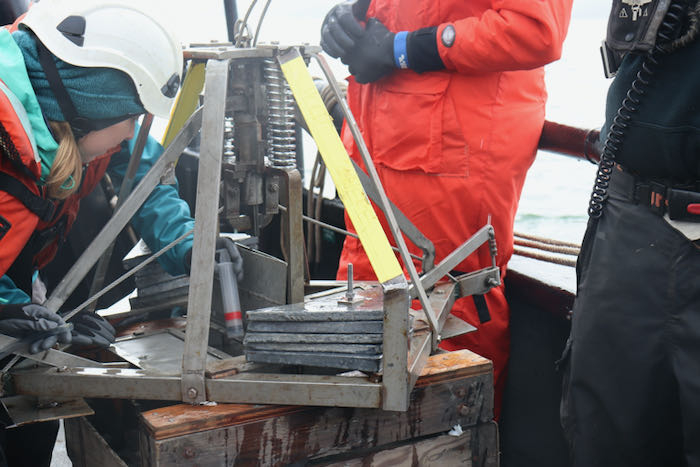
Sorting sediment is pretty low-tech: one person scoops sediment into a kitchen strainer with a big spoon, while another person sprays it with a hose to wash off the mud. The strainer captures the animals while the sediment falls through the holes. These animals are then bagged, labeled, and put in the freezer until they can be brought to a lab.

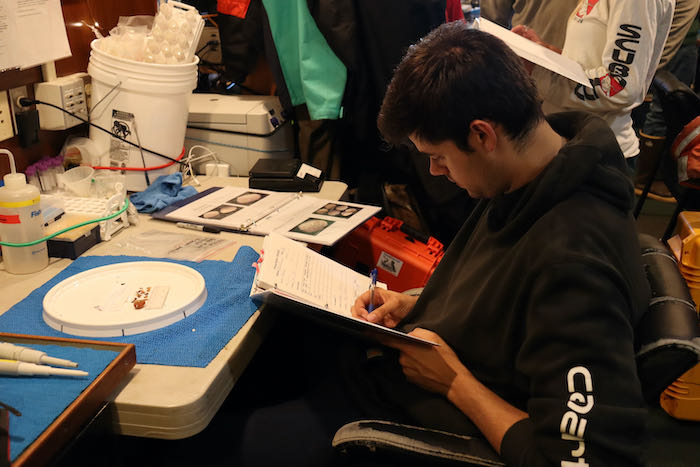
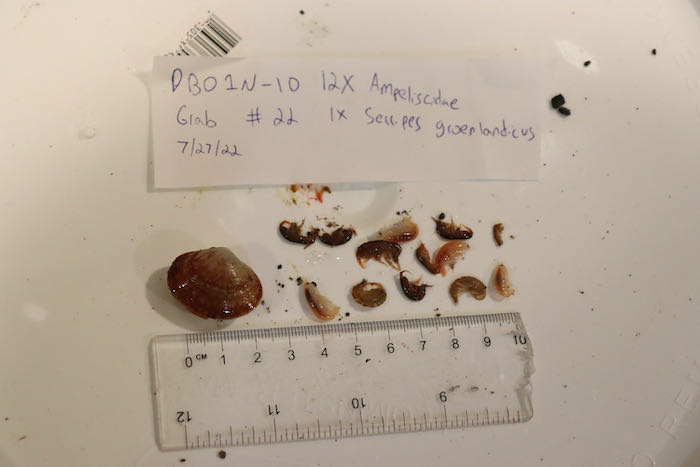
Why grab clams if you aren’t going to eat them?
Two scientists on board are using clams and other benthic organisms to answer questions about how HABs affect different animals, including humans.
Dr. Patrick Charapata studies how toxins affect marine mammals. He is trying to understand how the toxins made by harmful algal blooms travel through the food web from plankton to shellfish to walruses. Patrick will bring the frozen benthos samples back to his lab in Seattle and analyze them to learn the amount of two HAB toxins, saxitoxin and domoic acid, they contain. Hopefully, his research will lead to an understanding of how much toxin must be in the water for marine mammals to be affected.
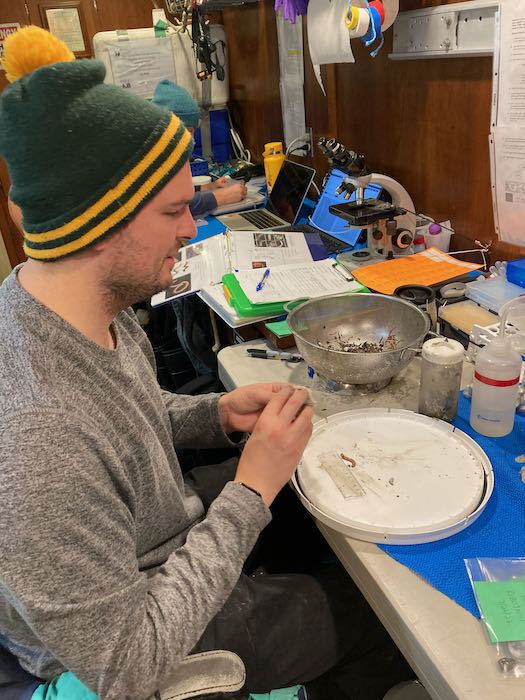
Evie Fachon is a graduate student and veteran of many Arctic research cruises. Her research focuses on a specific benthic organism, the macoma clam. Macomas are tiny little clams. They feed in two ways: by eating plankton living in the water, and also by eating cysts in the seafloor sediment.
Research has shown that sometimes HAB toxins are found in clams, but there are no HAB plankton in the water. Evie is hoping that studying macomas will help explain how this can be. She wants to know:
What types of toxins get stored in macomas?
How long do macomas stay toxic after a bloom?
How do the toxins stored in macomas change over time?
To study this, she will collect live clams and bring them back to her lab in Woods Hole, Massachusetts. In the lab, she will do feeding experiments. One experiment will try to answer the question of if macomas can accumulate toxins by eating plankton cysts. This experiment is pretty nifty. She will have two groups of clams. The control group will live in tanks filled with sediment from Massachusetts that has no cysts. The experimental group will live in tanks filled with sediment from Alaska that does contain cysts. If the clams in the experimental group get toxin in their bodies, then she will know that macomas can get toxins from cysts in the wild.
Scientific Vocabulary
BenthosThe bottom of a sea or lake, benthic organisms – creatures that live at the bottom of the sea
Sediment – mud, sand, and other matter at the bottom of the sea


Comments